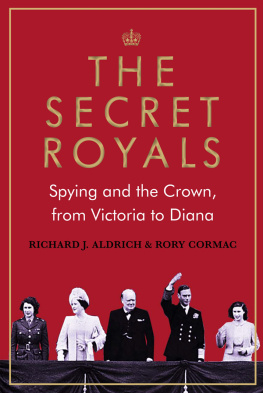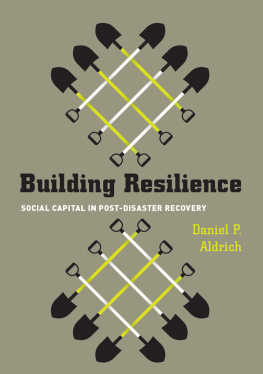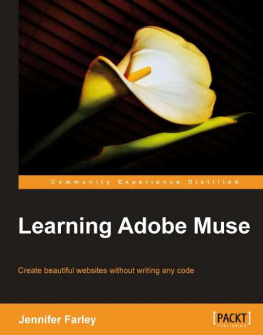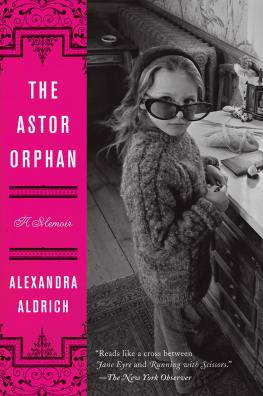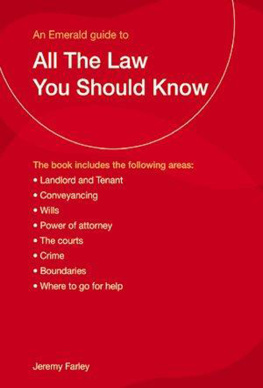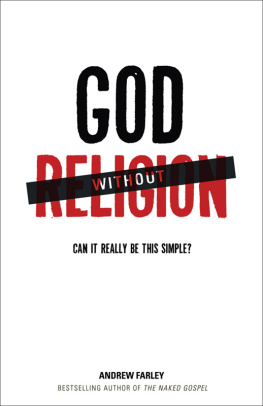Edward Farley Aldrich - The Partnership
Here you can read online Edward Farley Aldrich - The Partnership full text of the book (entire story) in english for free. Download pdf and epub, get meaning, cover and reviews about this ebook. year: 2022, publisher: Stackpole Books, genre: Non-fiction. Description of the work, (preface) as well as reviews are available. Best literature library LitArk.com created for fans of good reading and offers a wide selection of genres:
Romance novel
Science fiction
Adventure
Detective
Science
History
Home and family
Prose
Art
Politics
Computer
Non-fiction
Religion
Business
Children
Humor
Choose a favorite category and find really read worthwhile books. Enjoy immersion in the world of imagination, feel the emotions of the characters or learn something new for yourself, make an fascinating discovery.

- Book:The Partnership
- Author:
- Publisher:Stackpole Books
- Genre:
- Year:2022
- Rating:3 / 5
- Favourites:Add to favourites
- Your mark:
- 60
- 1
- 2
- 3
- 4
- 5
The Partnership: summary, description and annotation
We offer to read an annotation, description, summary or preface (depends on what the author of the book "The Partnership" wrote himself). If you haven't found the necessary information about the book — write in the comments, we will try to find it.
The Partnership — read online for free the complete book (whole text) full work
Below is the text of the book, divided by pages. System saving the place of the last page read, allows you to conveniently read the book "The Partnership" online for free, without having to search again every time where you left off. Put a bookmark, and you can go to the page where you finished reading at any time.
Font size:
Interval:
Bookmark:

STACKPOLE BOOKS
An imprint of Globe Pequot, the trade division of The Rowman & Littlefield Publishing Group, Inc.
4501 Forbes Blvd., Ste. 200
Lanham, MD 20706
www.rowman.com
Distributed by NATIONAL BOOK NETWORK
Copyright 2022 by Edward Farley Aldrich
All rights reserved. No part of this book may be reproduced in any form or by any electronic or mechanical means, including information storage and retrieval systems, without written permission from the publisher, except by a reviewer who may quote passages in a review.
British Library Cataloguing in Publication Information available
Library of Congress Cataloging-in-Publication Data available
978-0-8117-7094-1 (cloth)
978-0-8117-7095-8 (electronic)
 The paper used in this publication meets the minimum requirements of American National Standard for Information SciencesPermanence of Paper for Printed Library Materials, ANSI/NISO Z39.48-1992.
The paper used in this publication meets the minimum requirements of American National Standard for Information SciencesPermanence of Paper for Printed Library Materials, ANSI/NISO Z39.48-1992.
To Susie, the better half of our partnership. And of course, JBT
F irst, I must thank Dave Reisch at Stackpole Books for taking a chance on a first-time author and providing the energy, creativity, experience, and confidence to bring this project home. I am also in debt to his talented colleagues at Stackpole (including Elaine McGarraugh and Stephanie Otto), and the larger Rowman & Littlefield publishing house to which Stackpole belongs.
As a lifelong devotee of American history, I had circled around Henry Stimson and George Marshall for years, but never as a team and generally in the background of someone elses story. My interest in Stimson grew over a ten-year period as a result of five outstanding books, one a 1938 biography of his principal mentor Elihu Root by Philip C. Jessup, and four others that covered one or more of his protgs written by prominent historians Kai Bird, David Halberstam, Walter Isaacson, and Evan Thomas. Wanting to learn more about this man held in such high regard by so many leaders of the postwar generation, I read Elting Morisons Turmoil and Tradition. This definitive biography on Stimson, which I borrowed from heavily for The Partnership, caused me to question Winston Churchills famous post-World War II comment that it was George Marshall who had been the organizer of victory. It seemed to me that the American general had a solid civilian partner in Stimson.
Digging deeper, I read Forrest C. Pogue, Jr.s four-volume biographical masterpiece on Marshall published between 1963 and 1987. To research his book, one I also borrowed from liberally for mine, Pogue poured over 3.5 million pages of material and interviewed more than three hundred former colleagues of Marshall (as well as the reserved general himself). Although Pogues efforts provided wonderful insight into Marshall and Stimsons working relationship, I knew there had to be something else out there that could further illuminate it. That something was Stimsons remarkable diary. In taking the time every night to record a full account of his day and general thoughts during his five years working alongside Marshall, Stimson left a treasure behind of over 4,000 pages from which I could gradually assemble a picture of how truly astonishing the two mens partnership was.
For providing me additional color on the relationship between Stimson and Marshall as well as information on various members of Stimsons staff and Roosevelts cabinet, I must acknowledge Robert P. Patterson, Jr. and Robert M. Morgenthau, both now deceased. Pattersons father was Stimsons under secretary of war Robert P. Patterson whom Robert Morgenthau served under as an aide after the War. Morgenthau was the son of Henry Morgenthau, Stimsons fellow cabinet member (he was FDRs treasury secretary). I am grateful to both men for the generous time they granted and their wealth of anecdotes.
Among the enjoyments of undertaking this project was spending time researching Stimson (at Phillips Academy at Andover, Yale, Harvard, and Woodley Mansion), and Marshall (at the George C. Marshall Foundation located on the campus of the Virginia Military Institute). Not only did I have the pleasure of strolling through the majestic and historic settings of these iconic institutions but was also welcomed by friendly, knowledgeable, and helpful staff (thank you Jeffrey Kozak, Melissa Davis, Jessica Becker, Darwin Walker, Allerton Kilborne, and Paige Roberts among others). A special thanks to Karen Sallick, a trustee of Phillips Academy, for assisting me in gaining access to the archives of Stimsons beloved alma mater and for her general enthusiasm for the project.
For general guidance during the publishing process, I owe authors Evan Thomas, Kai Bird, Walter Isaacson, Michael Beschloss, David Roll, Walter Stahr, Larry Haas, Herman Pirchner, Mimi Swartz, and Hilary Wyss as well as the renowned literary agent Esther Newberg. They all offered their support and encouragement and gave me hope that being an international commodity banker by trade would not preclude me from getting the attention of a reputable publisher.
I must acknowledge my only research assistant, Robert H. Aldrich (aka Dad). After accompanying me on my very first research outing in 2011 (to the Yale University Library) he decided to learn all he could about the decision to drop the atomic bomb. My father turned eleven years old the month Japan formally surrendered to the Allies aboard the USS Missouri in Tokyo Bay and, like many Americans his age, still has a strong emotional and intellectual connection to World War II. Given this and his passion for science (he studied chemical engineering at Princeton), I was fortunate to be able to run things by his annoyingly impressive intellect and grateful to be the recipient of his unwavering enthusiasm for the project.
My interest in history was sparked when I first walked into Ms. Kohns second grade classroom at Rowayton Elementary School in Connecticut. When she saw that I was captivated by the individual portraits of the U.S. presidents on the walls, she recommended that I go to the library and take out a biography of Andrew Jackson. Once my mother introduced me to the celebrated, We Were There series of books a year or so later, history became a permanent part of my life and in the ensuing fifty years, Ive been blessed with a supportive family whove enabled my obsession. For thoughtfully gifting me books or passing along recommendations, I am in debt to my parents, my siblings and their families, my three sons, and various members of the Scull, Short, and Ferrarese clans that make up my wifes side of the family. I have also been fortunate to have several friends over the years (Hunter Smith, Brien Horan, and the late Peter G. Diamandis most notably) who typically opened conversations with me by saying hey, Im reading a book I think youd like.
Finally, I want to thank my wife, Susie for all her support over the decades. When my bank transferred me to Switzerland in 1990, she set aside a successful career in Manhattan. Moving with me again to London a few years later, towing along three boys under the age of five, Susie, an entrepreneur by instinct, became captivated by the beautiful gardens in England and pondered to herself why the English should have a monopoly on stunning landscapes. When we returned to Connecticut three years later, she started her own landscape design company pairing timeless English style with her own innovative flair. Her business took off, she created dozens of jobs, andafter nearly two decadesthe landscapes and gardens from Greenwich to Westport will never be the same. A bundle of energy, Susie did all this while partnering with me to raise three incredible sons in a family environment that nurtured kindness, love, humor, laughter, compassion, music, sports, the pursuit of knowledge, independence, and a strong desire to share with each other, and celebrate, all our individual and collective passions. As a result, life in our home has always been both entertaining and fascinating in equal parts. Successful partnerships always yield fruitful results and ours produced Jack, Ben, and Tommy.
Next pageFont size:
Interval:
Bookmark:
Similar books «The Partnership»
Look at similar books to The Partnership. We have selected literature similar in name and meaning in the hope of providing readers with more options to find new, interesting, not yet read works.
Discussion, reviews of the book The Partnership and just readers' own opinions. Leave your comments, write what you think about the work, its meaning or the main characters. Specify what exactly you liked and what you didn't like, and why you think so.


